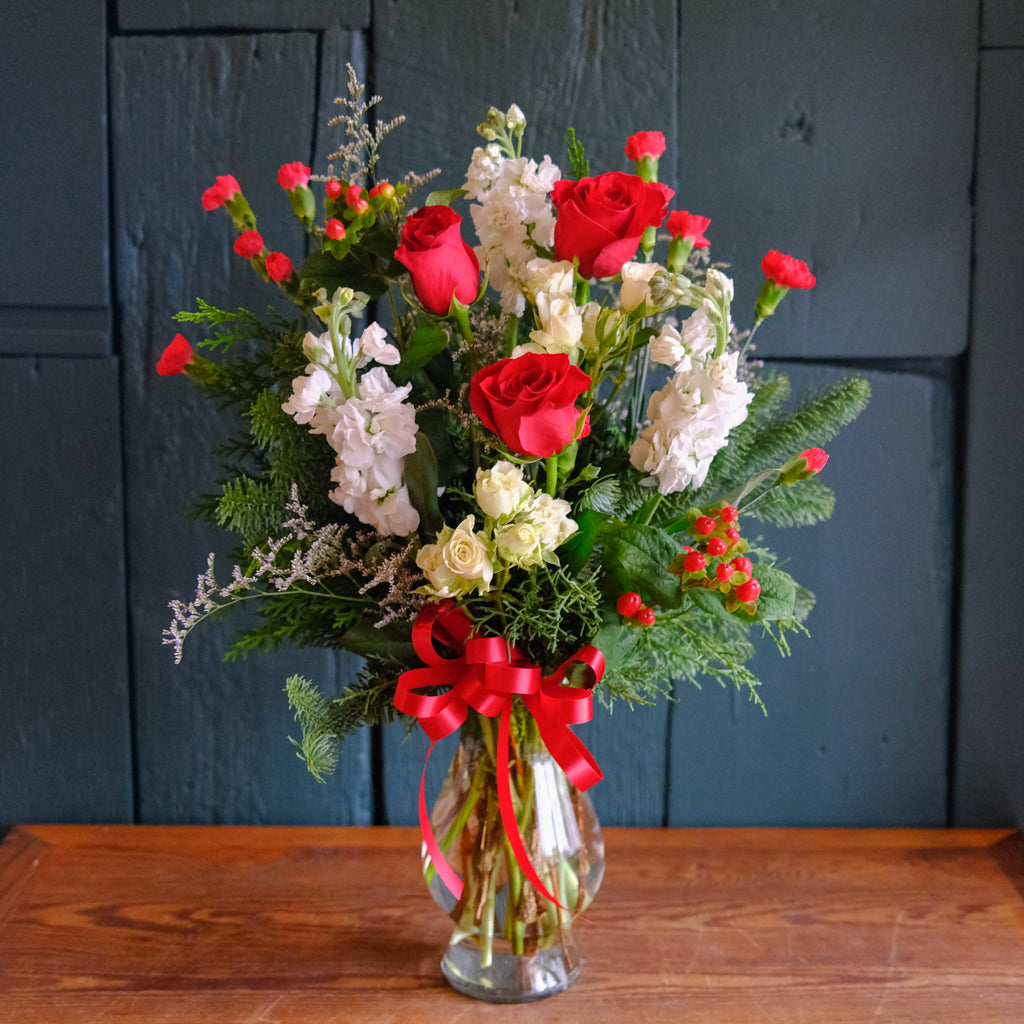Our amaryllis houseplants are descended from wild amaryllis native to Eastern Brazil and the central and southern Andes mountain region. These wild amaryllis are a diverse bunch. Different species can be found growing in the underbrush, in full sun, in flood areas, in dry spots, and even up in trees with their roots exposed.
The amaryllis we see around the holiday season have been bred over the years to produce dozens of hybrid varieties. Most commonly, these amaryllis are classified as single, double, miniature, trumpet, and jumbo. Trumpet amaryllis feature blooms that grow in a flared, tube-like shape. Single amaryllis have the classic single layer of petals in their lily-like bloom. Doubles contain multiple layers of petals. Miniature and jumbo varieties are smaller and larger than usual, respectively.
Whatever type of amaryllis you choose this season, caring for the plant is simple. Water the soil enough to maintain a moderate moisture level; overwatering can cause the bulb and its roots to rot. Keep your plant in a warm (at least 50 degrees Fahrenheit) spot in the house where it will get several hours of sunlight. Be sure not to position the pot in front of a heating or cooling vent. You can expect your amaryllis blooms to emerge about two months after the bulb was planted.
Amaryllis sometimes rebloom year after year. To give your bulb the best chance at reblooming, give it a dormant period of two months in the summer or fall. Don't water or fertilize your plant during its dormant period; just keep it in a cool, dark place. Move your plant back to a warm, sunny spot afterward and water it occasionally. You can return to your normal watering schedule about two months before you want your amaryllis to bloom.


